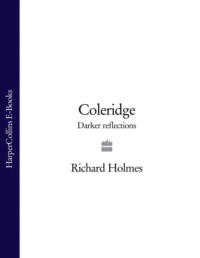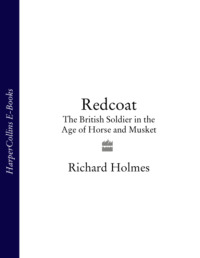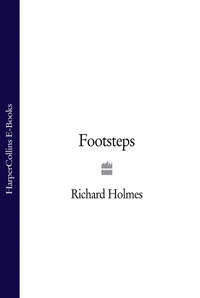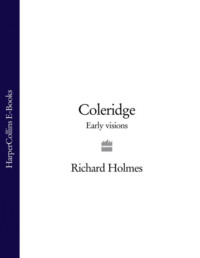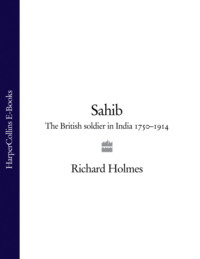
Полная версия
Dr Johnson and Mr Savage
It was only Elizabeth’s sudden injury (a torn tendon), and financial desperation, which finally brought him back to London and his marriage in 1740. There was also a chance to get Irene staged. These considerations shape the rest of the much-tested relationship: Elizabeth confined more and more to bed, drinking, reading and taking opium pain-killers; Johnson working hard, supporting and indulging her like an invalid, but emotionally withdrawn. The bedroom is no longer shared.61
The tone of the letter written at the end of January 1740, in which Johnson promises to return to Elizabeth, expresses a great deal. He is penitent, affectionate and guilty: ‘You have already suffered more than I can bear to reflect upon, and I hope more than either of us shall suffer again. One part at least I have often flattered myself we shall avoid for the future our troubles will surely never separate us more.’
He continues contritely: ‘I still promise myself many happy years from your tenderness and affection, which I sometimes hope our misfortunes have not yet deprived me of.’
But there is some uncertainty about her resentment: ‘I hope You do not think so unkindly of me as to imagine that I can be at rest while I believe my dear Tetty in pain.’
Moreover there is a defensiveness about his own dalliance with Molly Aston, which surely hides resignation at the fact that his princess had once again eluded him: ‘Be assured, my dear Girl, that I have seen nobody in these rambles upon which I have been forced, that has not contributed to confirm my esteem and affection for thee …’ But he ends with a gallant flourish: ‘I am, my charming Love, Yours, Sam Johnson.’62
It is interesting that Boswell slides over this whole separation, does not quote from the letter, and once again only refers to the friendship with Molly Aston retrospectively, at a much later date, in 1776: ‘the lady of whom Johnson used to speak with the warmest admiration … who was afterwards married to Captain Brodie of the navy.’63
From then on the marriage slowly petrified. Elizabeth was increasingly ill, or drunk. She at first took some part in Johnson’s journalistic work, reading and researching for him, but this soon tailed off. Her dowry was spent, her family relations (except Lucy in Lichfield) alienated from her, her husband sunk in hack-work. Some time in the mid-1740s she began to visit the country village of Hampstead for her health, and by 1748 she had almost permanent lodgings there. Johnson visited her on some evenings and at weekends.
She did not manage to attend the first night of Irene, Johnson’s final bid as a dramatic poet, in February 1749. Perhaps this was a relief to both of them. Garrick’s vicious caricature of her dates from this final stage of the marriage: ‘very fat, with a bosom of more than ordinary protuberance, with swelled cheeks, of a florid red, produced by thick painting, and increased by the liberal use of cordials; flaring and fantastic in her dress, and affected both in her speech and her general behaviour.’64 Yet it is the emotional disappointment of the entire marriage which is partly reflected in this sad parody of Johnson’s longed-for princess.
At Hampstead, Elizabeth was attended on by a young widow, Mrs Desmoulins, an old friend of the Lichfield circle, whom Johnson had brought south to be her companion. In old age she was cross-questioned by Boswell about the relations between husband and wife. What he discovered was omitted from his biography, and filed separately under the Latin heading Tacenda – to be held back in silence.
What Mrs Desmoulins said was this. Elizabeth drank heavily, using the excuse that she was not well; was usually in bed asleep when Johnson appeared; and had refused for years to have sexual relations with him. Johnson would retire to a separate bedroom, and when in bed would call in Mrs Desmoulins to talk with him. Presently she would lie on the bed, on top of the sheets but with her head on the pillow next to his. He would then cuddle and fondle her in an amorous way, before sending her abruptly out of the room.
To Boswell’s further, insistent questions and demands for detail (he was expert in every physical nuance of such encounters), Mrs Desmoulins would only reply that Johnson ‘never did anything that was beyond the limits of decency’.65 Boswell never established what young Mrs Desmoulins had thought those limits were; but the picture – tender, tragic, ludicrous – is clear enough.
It was at exactly this period, walking alone in the lanes of Hampstead outside his wife’s lodgings, that Johnson composed his greatest poem, The Vanity of Human Wishes. And it was now, as I have suggested, that his fictional biography might have ended, at the age of forty, in an apoplexy brought on by hard work, lack of recognition, frustration and misery.
It is against the background of this marriage, this longing for companionship, and this frustrated ‘dream of princesses’, that Johnson’s friendship with Savage has to be reconsidered.
Chapter 3 Night
There has always been one vivid, popular legend of Johnson’s unlikely friendship. It is enshrined in a particular anecdote that was passed lovingly around Johnson’s later circle: each one heard, embroidered and retold a different version of it. The account describes how Johnson and Savage walked round the squares of London all one night, being too poor to afford either food or lodging but sustained by the passionate intimacy of their conversation.
This story, in its various renditions, became symbolic of the Augustan writer’s life in Grub Street, just as the story of Thomas Chatterton’s death in a Holborn garret became symbolic of the romantic poet for the later eighteenth century. It passed quickly into treasured anecdote, and remains to this day the one clear image of young Johnson in London. A recent American scholar summarises it with relish: ‘Those who know nothing else of his early life can envision in Hogarthian detail Johnson in his ill-fitting great-coat and Savage dressed like a decayed dandy, wandering the street for want of a lodging and inveighing against fortune and the Prime Minister.’1
It is easy to see why the story appealed. It is indeed like a Hogarth illustration to Johnson’s famous line, from his poem London, ‘Slow rises worth, by Poverty depressed’. The link between poverty and genius, between poetry and lack of recognition, is axiomatic for the young writer coming to try his fortune in the great city.
We can instantly imagine the scene: the cobbled streets, the stinking rubbish, the tavern signs, the shuttered house-fronts; the moonlight and the dark alleys; the slumbering beggars, the footpads and the Night Watch; and the two central figures striding along, bent in conversation, convivial and ill-matched. Here is the huge, bony Johnson with his flapping horse-coat and dirty tie-wig, swinging the famous cudgel with which he once kept four muggers at bay until the Night Watch came up to rescue him; and here the small, elegant Savage with his black silk court-dress (remarked on at his trial), his moth-eaten cloak, his tasselled sword and his split shoes, which well-wishers were always trying to replace.
It is a night scene: these friends are outcasts from society, without money and without lodgings, talking of poetry and politics and reforming the world, while the wealthy complacent city slumbers in oblivion. They are in a sense its better conscience, ever wakeful; or its uneasy dream of oppression and injustice. It is a romantic, Quixotic, heroic or mock-heroic picture, depending on one’s point of view. But how true is it?
There are in fact four separate accounts of these night-wanderings. They are given by Sir John Hawkins, Johnson’s early biographer; by his young friend the Irish playwright, Arthur Murphy; by his later companion in the celebrated Club, the painter Sir Joshua Reynolds; and by Boswell. All depend on hearsay, for none of them actually knew Johnson at the time, or had ever seen him together with Savage. Indeed an extraordinary fact at once emerges: no one, at any time, or in any place, ever left a first-hand account of seeing Johnson and Savage together. It was, from the start, an invisible friendship.
The episode of their night-walks exists as a kind of composite memory rather than as a specific event which anyone witnessed. All the accounts must have had Johnson as their ultimate source, but the circumstances are never quite the same. To show how the story developed, it is interesting to unwrap each version and examine its layered contents. We begin with Boswell, and work backwards until we finally reach Johnson’s original account, dating from 1743.
Boswell was writing forty years later, and paints a general picture without describing a specific time or location in London. He emphasises the stoicism of the two friends whose imaginations could rise above the grim material facts of their poverty. ‘It is melancholy to reflect, that Johnson and Savage were sometimes in such extreme indigence, that they could not pay for a lodging; so that they have wandered together whole nights in the streets. Yet in these almost incredible scenes of distress, we may suppose that Savage mentioned many of the anecdotes with which Johnson afterwards enriched the Life of his unhappy companion, and those of other Poets.’2
Boswell seems to admit tacitly that there may be some picturesque exaggeration in Johnson’s fond recollections of these ‘almost incredible scenes of distress’. (Indeed the degree of Johnson’s poverty will bear further examination.) He likes to suppose that their talk was literary and anecdotal. He shrewdly imagines Johnson as collecting biographical ‘anecdotes’ from Savage, for the later Lives of the Poets; much as he in turn, many years later, would quiz Johnson for his own Life. His version of the night-walk is poetic: a handing-on of tales and traditions.
Uncharacteristically Boswell adds no visual details: nothing of dress, weather or season – a summer amble under the stars would presumably be very different from a winter tramp in rain or frost. But he does suggest, rather uneasily, that the two friends might sometimes have had enough money for other pursuits of the night, specifically drinking and whoring. ‘I am afraid, however, that by associating with Savage, who was habituated to the dissipation and licentiousness of the town, Johnson, though his good principles remained steady, did not entirely preserve [his] conduct … but was imperceptibly led into some indulgencies which occasioned much distress to his virtuous mind.’3
This is merely a hint, but a hint from Boswell on such a subject—experto crede—is much; and deserves to be borne in mind. So too does the rich London low-life material which Johnson subsequently incorporated into his Rambler essays, including a two-part biography of a country girl who becomes a prostitute, ‘The Story of Misella’. She ends her life in an appalling series of late-night taverns and infested night-cellars, which Johnson describes with bitter conviction:
Thus driven again into the Streets, I lived upon the least that could support me, and at Night accommodated myself under Penthouses as well as I could … In this abject state I have now passed four Years, the drudge of Extortion and the sport of Drunkenness; sometimes the Property of one man, and sometimes the common Prey of accidental Lewdness; at one time tricked up for sale by the Mistress of a Brothel, at another begging in the Streets to be relieved of Hunger by wickedness; without any hope in the Day but of finding some whom Folly or Excess may expose to my Allurements, and without any reflections at Night but such as Guilt and Terror impress upon me.
If those who pass their days in Plenty and Security could visit for an Hour the dismal Receptacles to which the Prostitute retires from her nocturnal Excursions, and see the Wretches that lie crowded together, mad with Intemperance, ghastly with Famine, nauseous with Filth, and noisome with Disease; it would not be easy for any degree of Abhorrence to harden them against Compassion, or to repress the Desire which they must immediately feel to rescue such numbers of Human Beings from a state so dreadful.4
Sir Joshua Reynolds’s account has a very different atmosphere. President of the Royal Academy, an elegant, easygoing man of the world, Reynolds had been fascinated with Savage’s story ever since he had first read Johnson’s Life in the 1750s. He had then shared with Johnson an acute dislike of aristocratic pretensions, and at a supper party in the presence of the Duchess of Argyll, the two pretended to be manual labourers, and loudly discussed the hourly wage-rate: ‘How much do you think you and I could get in a week, if we were to work as hard as we could?’5
Reynolds had first read of Savage on returning from his painter’s apprenticeship in Rome, casually picking up the book in a drawing-room in Devonshire. He began to read it ‘while he was standing with his arm leaning against a chimney-piece. It seized his attention so strongly, that, not being able to lay down the book till he had finished it, when he attempted to move, he found his arm totally benumbed.’6
This is a painter’s anecdote, mental attention represented by physical posture, with a certain flattering exaggeration of pose. Reynolds evidently questioned Johnson subsequently about his night-walks with Savage, and produced a witty bravura version, which would have told well in the Club. He supplies an exact location, a brisk amusing style, a conversational theme and a dramatic flourish at the end. All is high style and insouciance, a brilliant Society sketch:
[Johnson] told Sir Joshua Reynolds, that one night in particular, when Savage and he walked round St James’s Square for want of a lodging, they were not at all depressed by their situation; but in high spirits and brimful of patriotism, traversed the square for several hours, inveighed against the minister, and ‘resolved they would stand by their country.’7
The touch of heroic absurdity – two down-and-outs resolving to save the nation – is designed for indulgent laughter. But Reynolds, if he reports Johnson accurately, tells us two surprising things. The first is that the night-walks did not take place in the fabled zone of Grub Street but in the new, fashionable squares of the West End. The second is that their talk was not literary but political. They talked daring opposition politics against the corruption of the Whigs and the Prime Minister, Sir Robert Walpole; and they praised ‘patriotism’, a specifically eighteenth-century usage, implying a radical politics which reviled the ‘German’ monarchy of the Hanoverians. Both this geography and this ideology throw a significant light on the young Johnson and his friend.
The compact geography of eighteenth-century London meant that the city could be crossed on foot in two hours, from the Tower in the south-east to Tyburn in the north-west. It represented a well-defined grid-map of power, professions and social classes. The central axis, running east-west parallel to the River Thames, was the broad boulevard of the Strand. Originally, as the name implies, the Strand was a riverside thoroughfare open to the water, with warehouses, shops, town houses, quaysides, and open unwalled shingle along its length. There was no regular Embankment, and no bridge across the river at this point. A painting by Canaletto, made from the terrace of Somerset House looking east in the 1740s, shows a broken vista of houses, balustrades and riverside steps going beyond St Paul’s to the single London Bridge at Southwark in the East End.
The river was itself a thoroughfare as busy as the Strand, packed with skiffs, wherries, sailing barges and every conceivable kind and size of water-taxi, which passengers hailed at scores of stairs, landing-stages and pontoons. This constant flow of human traffic, east-west along the Strand and the Thames, by day and night, represented the shuttle of power and business activity within the capital.
So, to the east of the Strand, from Ludgate to the Tower and Spitalfields, lay commercial London: banking, broking, shipping, publishing, manufacturing, and the slums. This was the original, historical sire of Grub Street, a narrow road of printers, taverns and lodging-houses roughly where the Barbican and the Museum of the City of London now stands.8 It was where Edward Cave had established his Gentleman’s Magazine, in rooms actually above the old medieval arch of St John’s Gate, in Clerkenwell, which young Johnson ‘beheld with reverence’ when he first arrived in London. It was where a young writer began when he came to seek his fortune, and where an old one ended if he had failed to find it. It was the kingdom of Alexander Pope’s Dunces. It was the East End of hope, and of despair.
But this is not where Johnson and Savage walked all night: they had gone ‘up West’ to the London of political power, wealth and social privilege. They were walking in enemy territory, the land to be conquered, and they came like spies in the night, their very presence a provocation.
To the west of the Strand, then, lay the smart coffee-houses of Charing Cross, the ministries of Westminster and Whitehall, Parliament and the Court, the royal parks and the elegant new squares of what became Mayfair. St James’s Square, only laid out in the 1720s, was the home of dukes and dandies, next to the clubs of St James’s and the royal palace itself. To talk of ministerial corruption and ‘patriotism’ here was like blowing a trumpet under the walls of Jericho. It was an heroic gesture, a defiant pose, which a painter like Reynolds would not forget.
Moreover, such a night-incursion into the domain of wealth and privilege was not a casual expedition. Reynolds may not have known this, but for Savage it was almost a ritual, repeated many times previously and solemnly enshrined in his own writings. In taking his young protégé Johnson into these familiar haunts, he was guiding him ceremonially, as Virgil guides Dante, through a purgatorial topography where much is to be learned by the angry young provincial, familiar only with book-learning:
The Moon, descending, saw us now pursue
The various Talk: – the City near in view!
Here from still Life (he cries) avert thy Sight,
And mark what Deeds adorn, or shame the Night!9
This is from the key poetic document of Savage’s career, the long visionary poem The Wanderer (1729), part meditation and part confession. Here, in its third canto, Savage describes such a night-pilgrimage through London. The young poet is guided by the Virgilian figure of ‘the Hermit’, a sage who has retired from the fret and folly of city life, to read poetry and philosophy in a cave and contemplate the wild beauty of Nature. This is one of Savage’s recurring fantasies of himself, as Johnson eventually came to understand.
The Hermit points out the glittering, delusive dissipations of the West End, as Savage must have instructed Johnson during their own nocturnal pacings round the squares of Mayfair:
Yon Mansion, made by beaming Tapers gay,
Drowns the dim Night, and counterfeits the Day.
From lumin’d windows glancing on the Eye,
Around, athwart, the frisking Shadows fly.
There Midnight Riot spreads illusive Joys,
And Fortune, Health, and dearer Time destroys.10
Against this glimpse of shadow play of aristocratic revelry the Hermit points out the solitary light from a garret window, which signals the ‘patriot’ poet hard at work, perhaps at the other end of the Strand, somewhere near Grub Street. For him, true wealth is not a handsome building, a property speculation, but an intellectual construction, a mental tower of learning and independent intelligence:
A feeble Taper, from yon lonesome Room,
Scatt’ring thin rays, just glimmers through the Gloom.
There sits the sapient BARD in museful Mood,
And glows impassion’d for his Country’s Good!
All the bright Spirits of the Just, combin’d,
Inform, refine, and prompt his tow’ring Mind!11
One may suspect, like Boswell, that Savage’s poetry was more improving than his conduct on such occasions. His Hermit, to say the least, is an idealisation. For it was on just such a night-walk, ten years before, that Savage had been involved in a brawl in a whorehouse, and killed a man and injured a woman, five minutes from St James’s Square in Charing Cross. As Johnson later observed, ‘The reigning Error of his Life was, that he mistook the Love for the Practice of Virtue’.12
When Johnson himself came to describe such night-walks in his own poem London (May 1738), he was much less dreamy and elevated. Indeed he was bitingly realistic, and we see again the big man with the cudgel. He seems to make some unmistakable reference to Savage’s less poetical exploits:
Prepare for Death, if here at Night you roam,
And sign your Will before you sup from Home.
Some fiery Fop, with new Commission vain,
Who sleeps on Brambles till he kills his Man;
Some frolick Drunkard, reeling from a Feast,
Provokes a Broil, and stabs you for a Jest.13
The irony here may be deeper than it first appears. Because this may be Savage himself speaking. There is considerable evidence that this passage, and indeed much of the poem, is a dramatic monologue written partly in Savage’s own voice. The whole of London may be partly Johnson’s attempt to render, in verse, the impact of Savage’s long conversations through the night. In this sense the poem could be considered as Johnson’s first version of Savage’s biography.
Certainly it seems true that Johnson first discovered in their night-walks the new form of intimate life-writing. It was to be like an extended conversation in the dark, taking ordinary facts and anecdotes, and pursuing them towards the shadowy and mysterious regions of a life, at the edge of the unknown or unknowable.
Johnson’s early impressions of these night-walks continue to be modified, in a complex way, by the other friends who recollected them. Arthur Murphy, a genial Irish playwright nearly twenty years Johnson’s junior, turned them into a piece of delightful comedy. Moving them even deeper into the West End, to the edge of Hyde Park, he added picturesque details of time and money, and with his playful turns of phrase seems to conjure up the witty outlines of a sketch that might have been written long after by Peacock or G. B. Shaw. (It should be read, perhaps, in a light Dublin brogue.)
Johnson has been often heard to relate, that he and Savage walked round Grosvenor Square till four in the morning; in the course of their conversation reforming the world, dethroning princes, establishing new forms of government, and giving laws to the several states of Europe, till, fatigued at length with their legislative office, they began to feel the want of refreshment; but could not muster up more than fourpence halfpenny.14
The ‘fourpence halfpenny’ is, of course, a spurious comic exactitude. Yet there is something about Murphy’s whole scenario, with its gracious absurdities, that carries a curious literary conviction. Why is this?
It is, surely, that Murphy has captured or suggested a premonition of the high, elegant, philosophic comedy of Johnson’s Rasselas (1759). The destitute Savage talking to Johnson about giving laws to Europe is not unlike the deluded Astronomer telling Prince Imlac that he has been secretly assigned the universal regulation of the weather. ‘… The sun has listened to my dictates, and passed from tropic to tropic by my direction; the clouds, at my call, have poured their waters, and the Nile has overflowed at my command; I have restrained the rage of the Dog Star, and mitigated the fervours of the Crab. The winds alone, of all the elemental powers, have hitherto refused my authority …’15
These confidences, too, are delivered in the dark, in the Astronomer’s turret, during a midnight storm. It was perhaps Savage who first gave Johnson the theme for Rasselas: that ‘dangerous prevalence of the imagination’ which Imlac discovers in the most interesting of human minds. Among those is the Poet himself, who must be acquainted with ‘all the modes of life’, who must commit his claims ‘to the justice of posterity’ and who must write ‘as the interpreter of nature, and the legislator of mankind’.16




